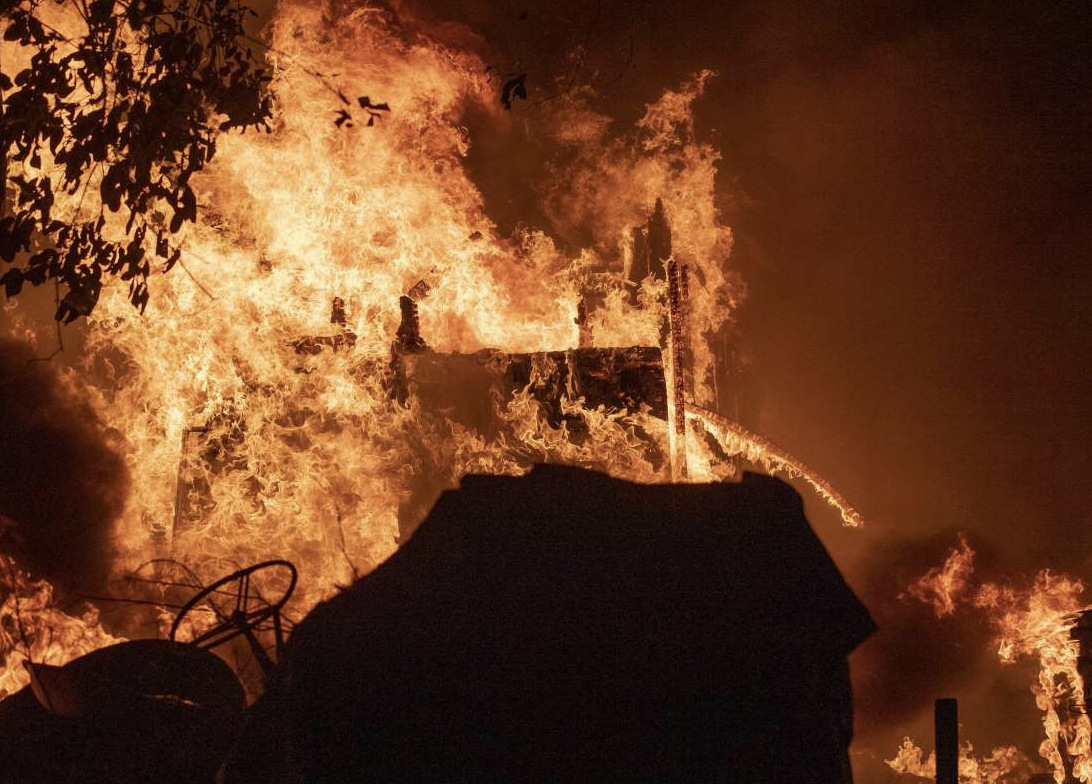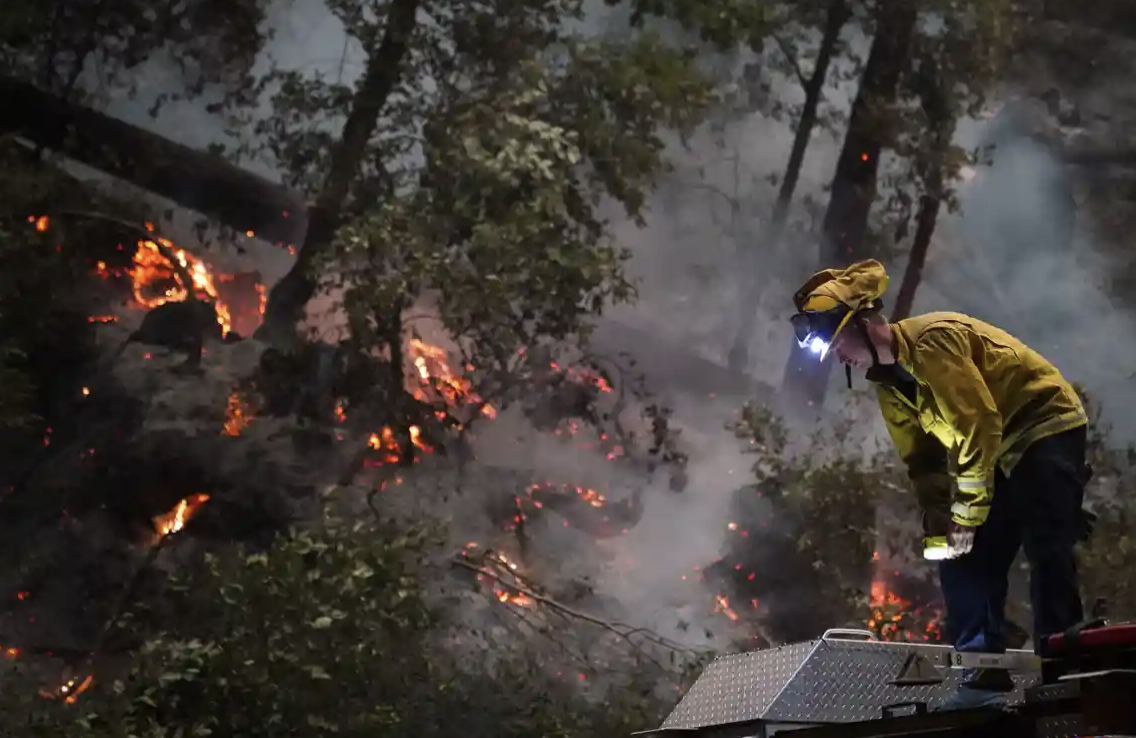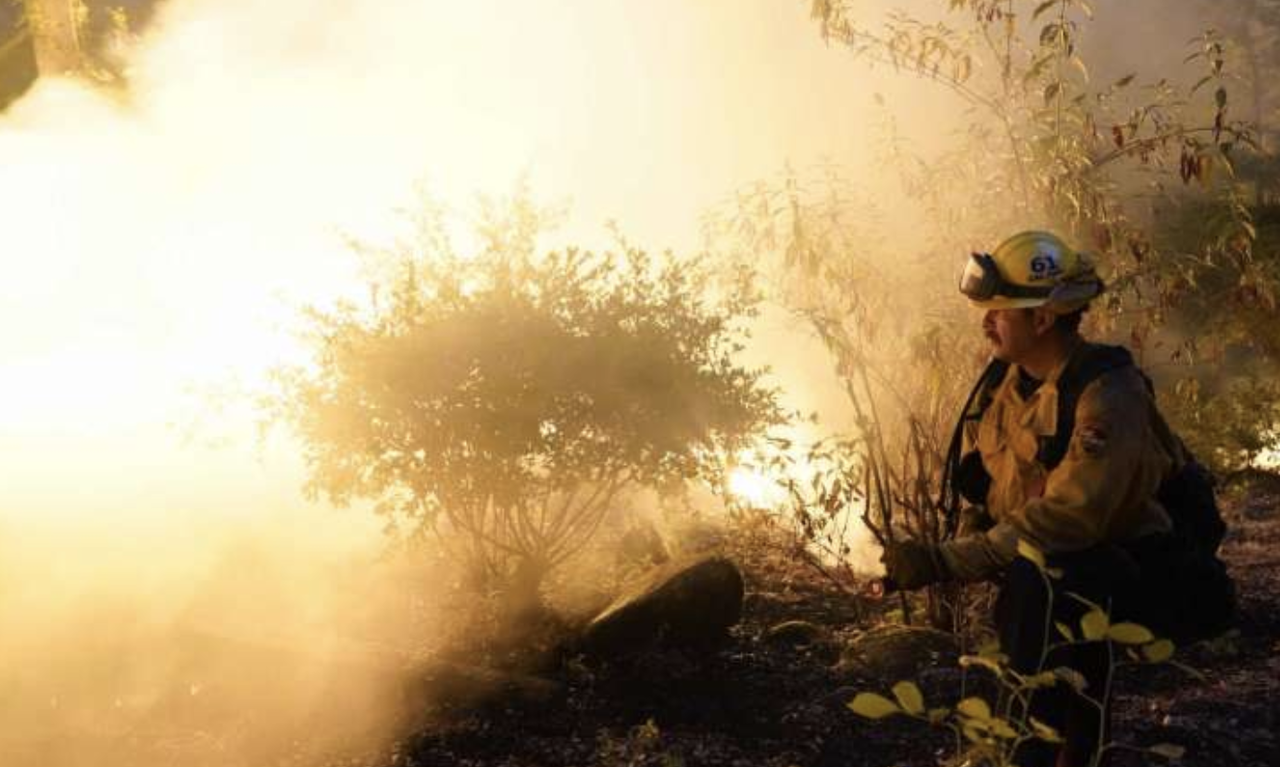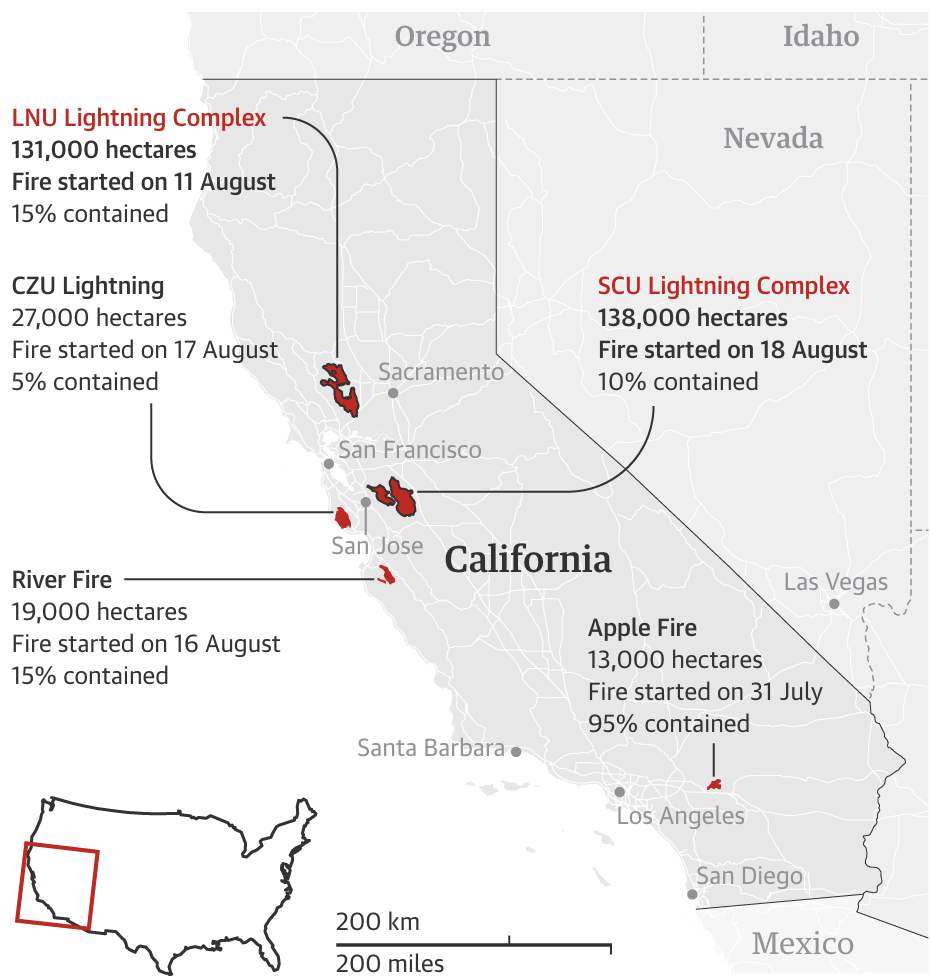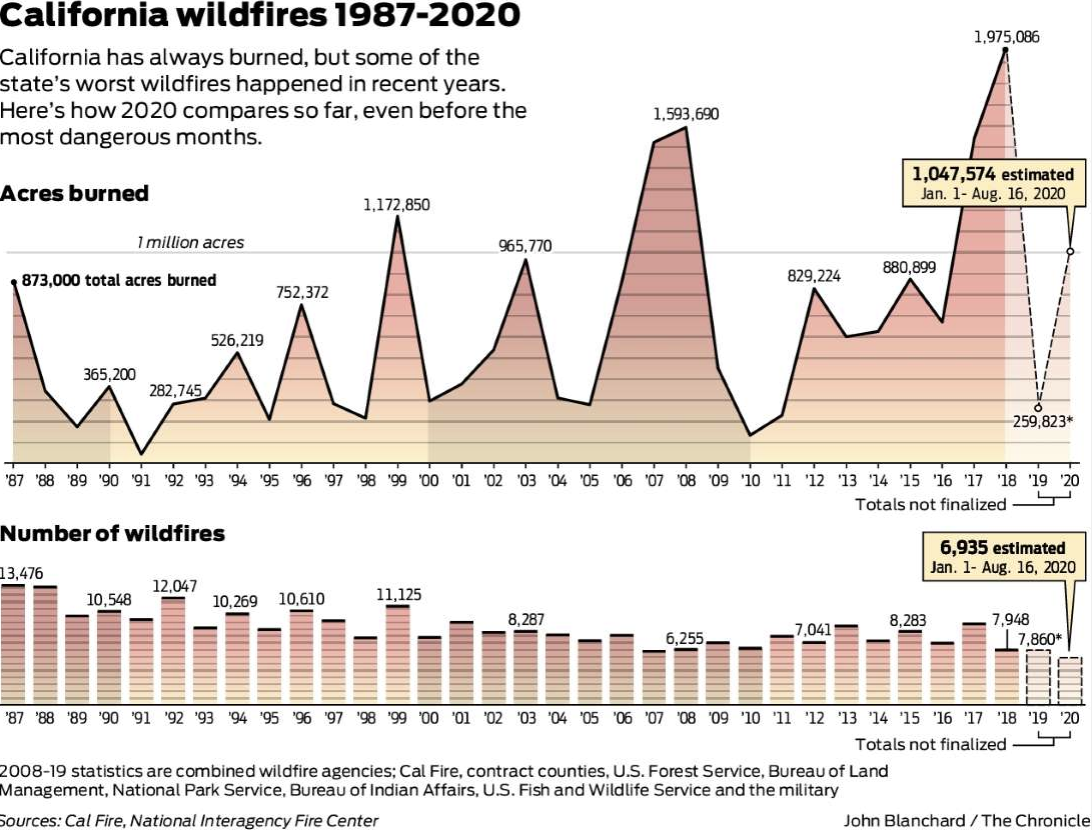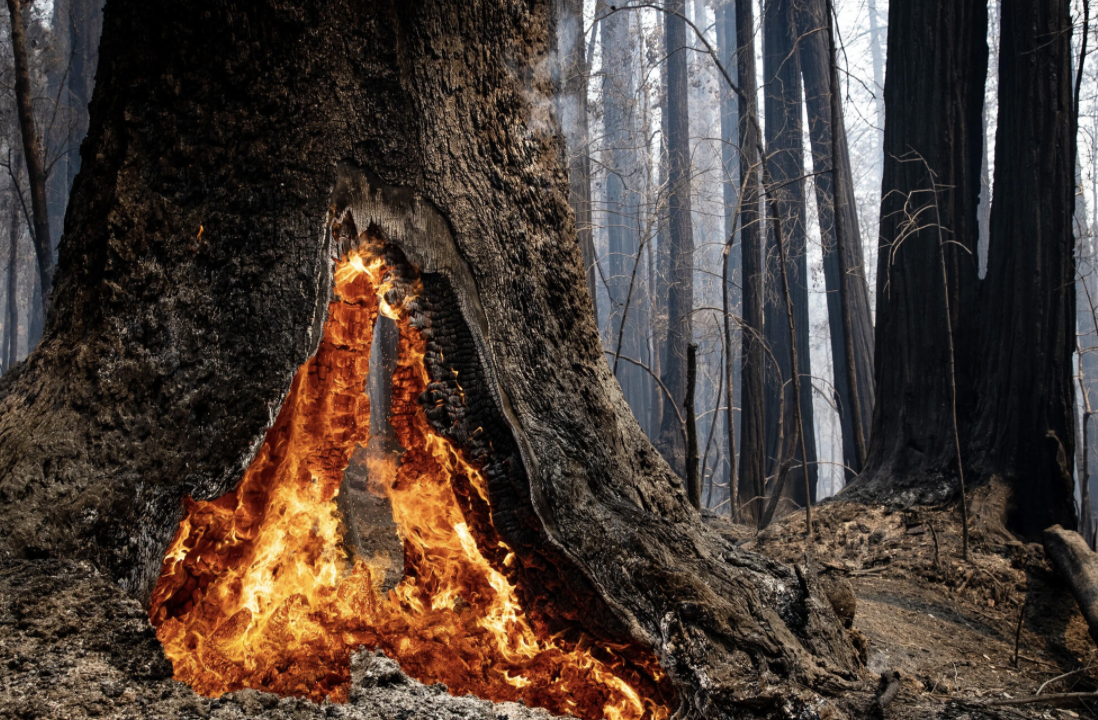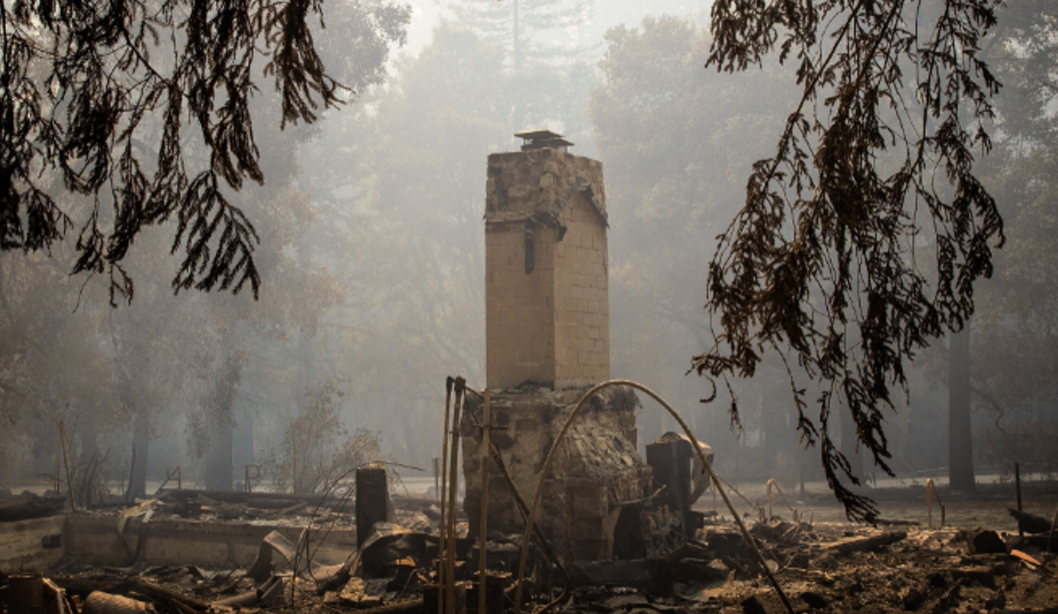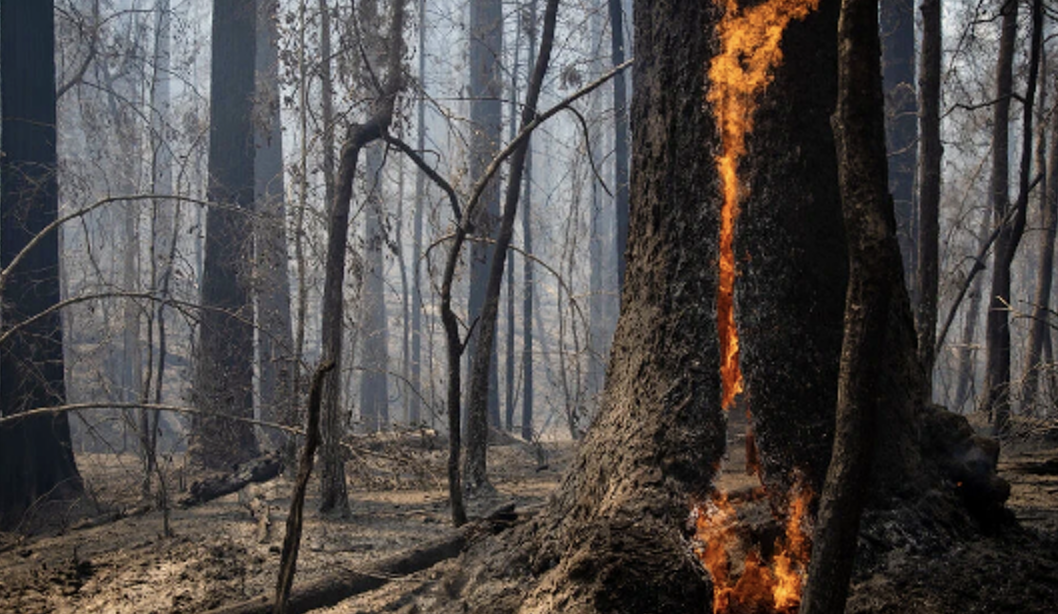In the course of just one week, wildfires blazing across the state of California have burned through nearly one million acres statewide, destroying hundreds of homes ahead of an expected storm system heading toward the state that could bring more high winds and lightning strikes.
Two clusters of wildfires in the Bay Area have grown to become the second- and third-largest wildfires in recent state history by size.
Light winds and cooler and more humid nighttime weather helped fire crews make progress on those fires and a third group of fires south of San Francisco ahead of the forecast of warm, dry weather, erratic wind gusts and lightning, state fire officials said.
Weary firefighters in California raced Saturday to slow the spread of the blazes as President Donald Trump issued a major disaster declaration to provide federal assistance. Gov. Gavin Newsom said in a statement that the declaration will also help people in counties affected by the fires with crisis counseling, housing and other social services.
Calm weather overnight allowed firefighters to make progress against a trio of massive wildfires burning in Northern California, but they were bracing for a weather system Sunday that will bring high winds and thunderstorms that could spark new fires and fan existing blazes that destroyed nearly 1,000 homes and other structures and forced tens of thousands to evacuate.
Source: The Guardian
The “complexes,” or groups of fires, burning on all sides of the San Francisco Bay Area, were initially sparked by lightning strikes – some of roughly 12,000 strikes registered in the state in the past week. The National Weather Service issued a “red flag” warning through Monday afternoon for the drought-stricken areas across the Bay Area, meaning extreme fire conditions, including high temperatures, low humidity and wind gusts up to 65 mph “may result in dangerous and unpredictable fire behavior.”
“The worst is not behind us. We are in a battle rhythm,” California Department of Forestry and Fire Protection (Cal Fire) Chief Thom Porter said.
The LA Times reported Sunday night that the US military and the state national guard have been deployed to help fight the blazes due to the shortage of able-bodied prisoners able to double as firefighters.
In some parts of the state people are collecting supplies to help those displaced by the blazes.
People are seen collecting donations of supplies to help the tens of thousands of people forced to evacuate amid the ongoing wildfire threat in California. https://t.co/oq574FjYO6 pic.twitter.com/1eb7rdd6Hd
— ABC News (@ABC) August 23, 2020
Since thousands of lightning strikes ignited the first blazes on Aug. 15, the state has reported 585 wildfires that have burned nearly a million acres, or 1,562 square miles (4,046 square kilometers).
Source: The Chronicle
Video shared by Mish Talk showed a devastating blaze ripping through the Mojave National Preserve.
The New York Times warned that in the coming days, the weather will likely make the situation even worse.
Some of the most devastating scenes came out of the state’s national parks, where redwoods burned on Friday and Saturday.
The remains of the headquarters at Big Basin Redwoods State Park can be seen below.
Fire officials are worried that another extreme period of lightning strikes, like the 12,000 strikes blamed for igniting many of the 585 new fires that have emerged since last weekend, could roll through Northern California in the coming days, potentially bringing new blazes to the scorched region.
In the state’s desperation, Gov Newsom put out a plea for assistance from Australia and Canada, after Australia grappled with its own devastating wildfires last season. “These fires are stretching our resources, our personnel,” the governor said. Fortunately, more supplies are on their way.
Coverage of the fires has included many meteorological terms like “fire whirls”, “fire tornadoes”, “fire clouds” and “running crown fires”. For those who aren’t already familiar with these terms, here’s a definition, per USA Today.
Pyrocumulus clouds
One of the more distressing examples are pyrocumulus clouds – essentially “fire clouds” that form over heat sources. The bushfires that ravaged Australia earlier this year featured the massive clouds.
“They’re very concerning for firefighters because they cause their own storm,” he said.
In humid climates, reported ABC News, they are able to generate rain and provide some relief for storms. But in drier climates, the lightning from the storm itself can ignite more fires.
Running crown fires
Two separate fire events – running fires and crown fires – also can merge to form what are known as running crown fires.
Running fires are when fires accelerate at a rate faster that can be controlled. Crown fires take place when fires climb a tree; they usually spread below the tree line before making their way upward, Hockenberry says.
Running crown fires make their way to the tops of trees and move quickly. Also known as active crown fires, these fires appear to burn through the entire canopy as opposed to individual trees, according to the USDA Forest Service.
“You can almost watch tree to tree burn in a matter of seconds from each other,” Hockenberry said, “and you’ll see this gigantic flame wall spreading on the tops of trees.”
Fire tornadoes, whirls
Fire tornadoes, such as the one in the Loyalton Fire, are generated when intense heat from a wildfire causes hot air to rush up from the ground.
All of the air rushing upward has to be replaced at the surface, said Dawn Johnson, a senior meteorologist at NWS Reno to USA TODAY earlier this week. As air comes in it sometimes starts to rotate.
But fire whirls, as scary as they are, have historical precedent. The Great Chicago Fire in 1871, one of the most devastating in American history, was exacerbated by fire whirls.
There are plenty of others, too, said Hockenberry, both recently and in the past, including the 2018 Carr fires, a 1923 earthquake in the Kantō region of Japan that caused severe fires, and the Peshtigo Fire in Wisconsin, which erupted at the same time as the Great Chicago Fire.
According to SFGate, fire crews battle what they call the ‘LNU Lightning Complex’ fires burning across the North Bay Areaare preparing for dry lightning and gusty winds to pick up throughout the day, which could further fan the flames.
“Any lightning that comes through, based on the fact we have so many resources that are affected and stretched thin throughout California, it’s going to likely result in additional fires,” Cal Fire unit chief Shana Jones said. “We do have a plan in order to immediately attack those fires, but it’s going to take some work.”
Cal Fire officials cautioned that preventing new fires from becoming major blazes will become their immediate top priority, so residents may see resources pulled from fires already burning near them.
More than 1,700 people are helping battle the LNU Lightning Complex, with more arriving from out of state. Fifteen engines from Washington and 25 from Oregon arrived over the weekend, Jones said, adding that the LNU fire is the state’s No. 1 priority for getting more resources. “Despite the increase in resources, we are definitely far from getting these fires handled.”


